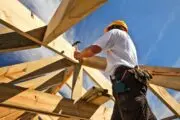More multi-dwelling homes are being built across Canada than normal, according to new research by the Royal Bank of Canada, but an impending flood of inventory shouldn’t be anything to worry about.
In a newly-published RBC Economics Canadian Housing Health Check report, the status of multi-residential projects under construction across the country were noted to be “significantly outside historical norms.” This stands as a contrast to single-family dwellings and new home inventory for both multi- and single-family homes, which were categorized as “within historical norms.”
With a record-high number of apartments under construction in Canada, the report highlights potential absorption risks over the medium term. However, senior RBC economist Robert Hogue pointed out that Canada’s elevated levels of multi-residential dwellings under construction isn’t necessarily a sign of overbuilding.
“It’s a response to low inventories in most markets,” explained Hogue in the report. “Still, it entails some absorption risks.”
The RBC report notes that most of the units being built are located in Toronto (27 per cent), Vancouver (17 per cent) and Montreal (14 per cent). The country’s condo building boom over the last 20 years largely reflects policy-induced market changes, such as limitations on urban sprawl, and the affordability of condo apartment housing types.
As a result, condo building represents a market share gain against single-family homes. Hogue’s report pointed out that strong apartment construction should be weighed against “solid demand for lower priced housing options.”

The inventory of completed but unsold multi-unit homes is thin, the report stated, with levels falling to the lowest level in more than a decade on a per 1,000 population basis. The same can be said for single-detached units — with no signs of excess supply, unsold inventory is the lowest in two decades.
The health of the housing market stands as a crucial component of the 2021 election as Canadians look to the government for relief from the country’s chronic housing problems. In particular, resale property supply shortages continue to be named as one of the contributing factors behind Canada’s soaring real estate prices and market competition.
To address these problems, each of the three major political parties have focused their campaign housing platforms around boosting home inventory while implementing control measures such as taxation and foreign buyer policies.
The Liberals are proposing to build, preserve or repair an additional 1.4 million homes across four years, while the Conservatives are promising to construct one million homes in the next three years. If elected, the NDP says it would create at least 500,000 units of affordable housing over the course of a decade, half of which within the next five years.







